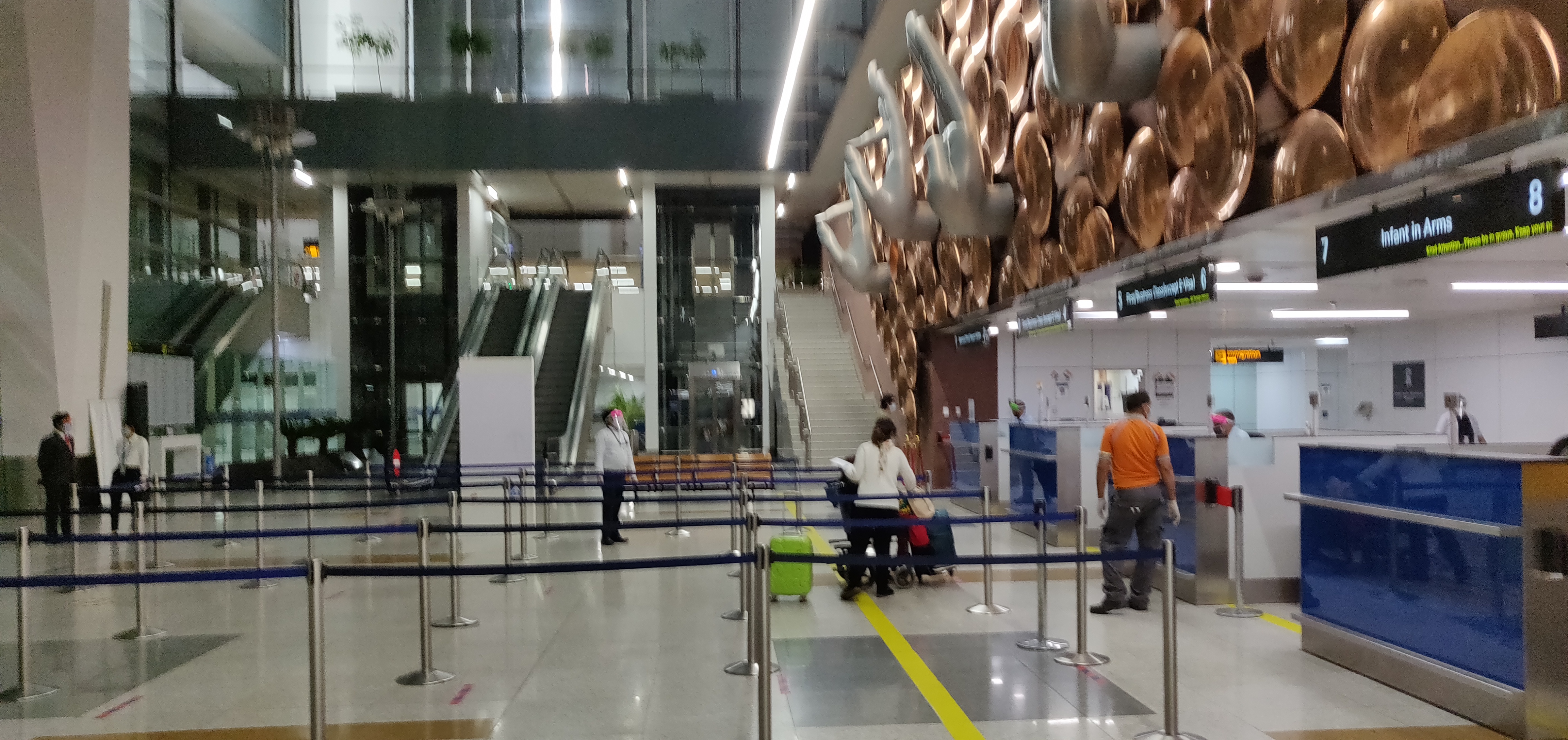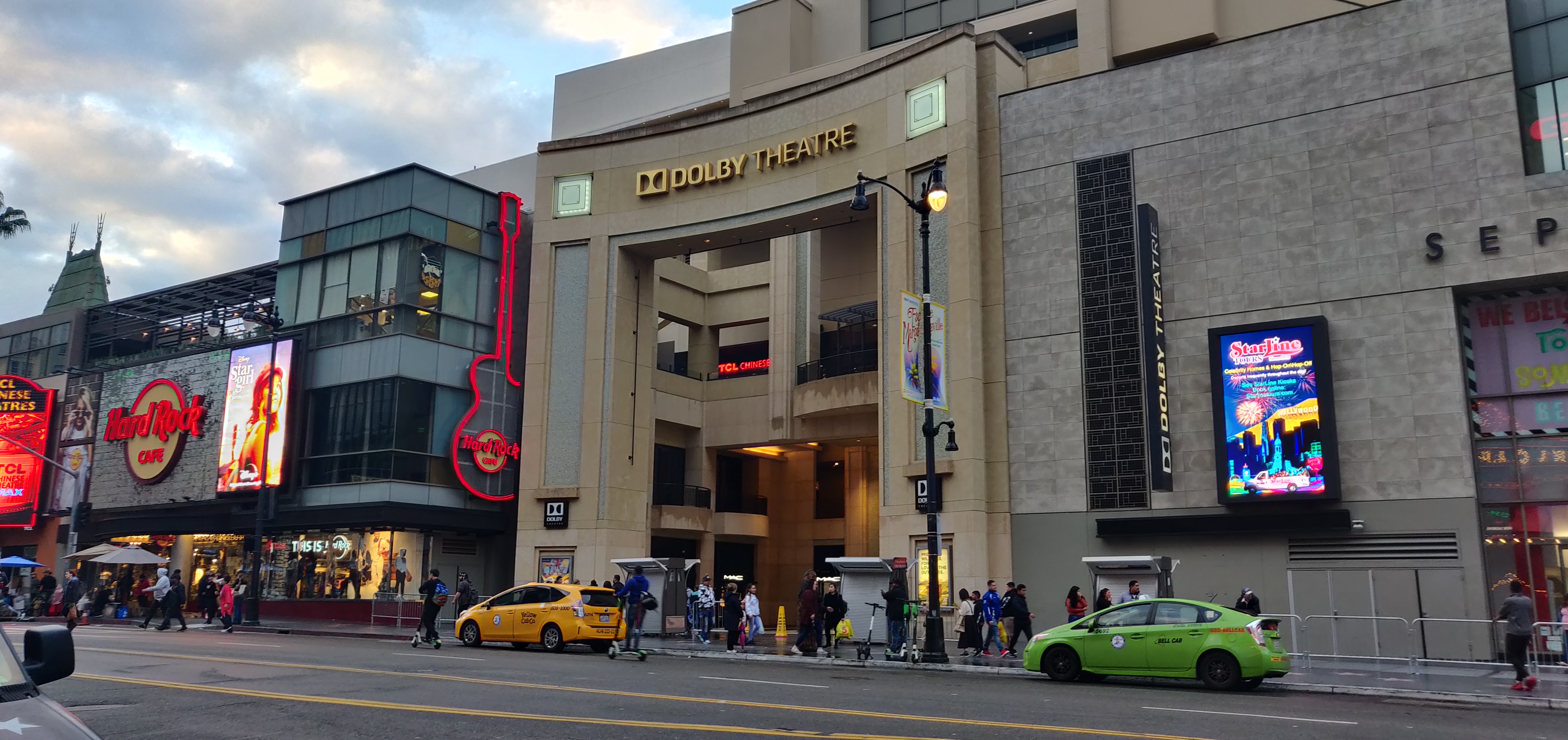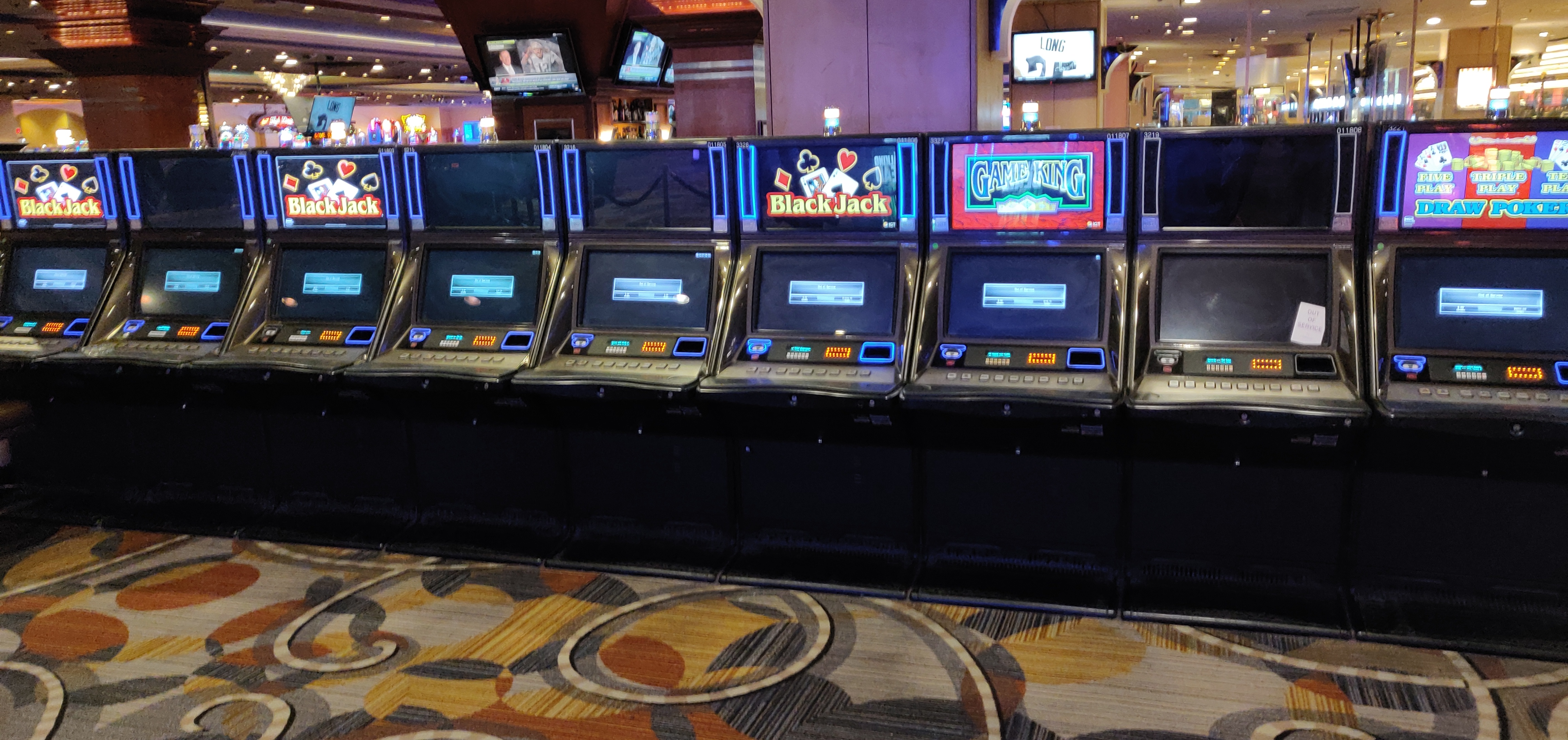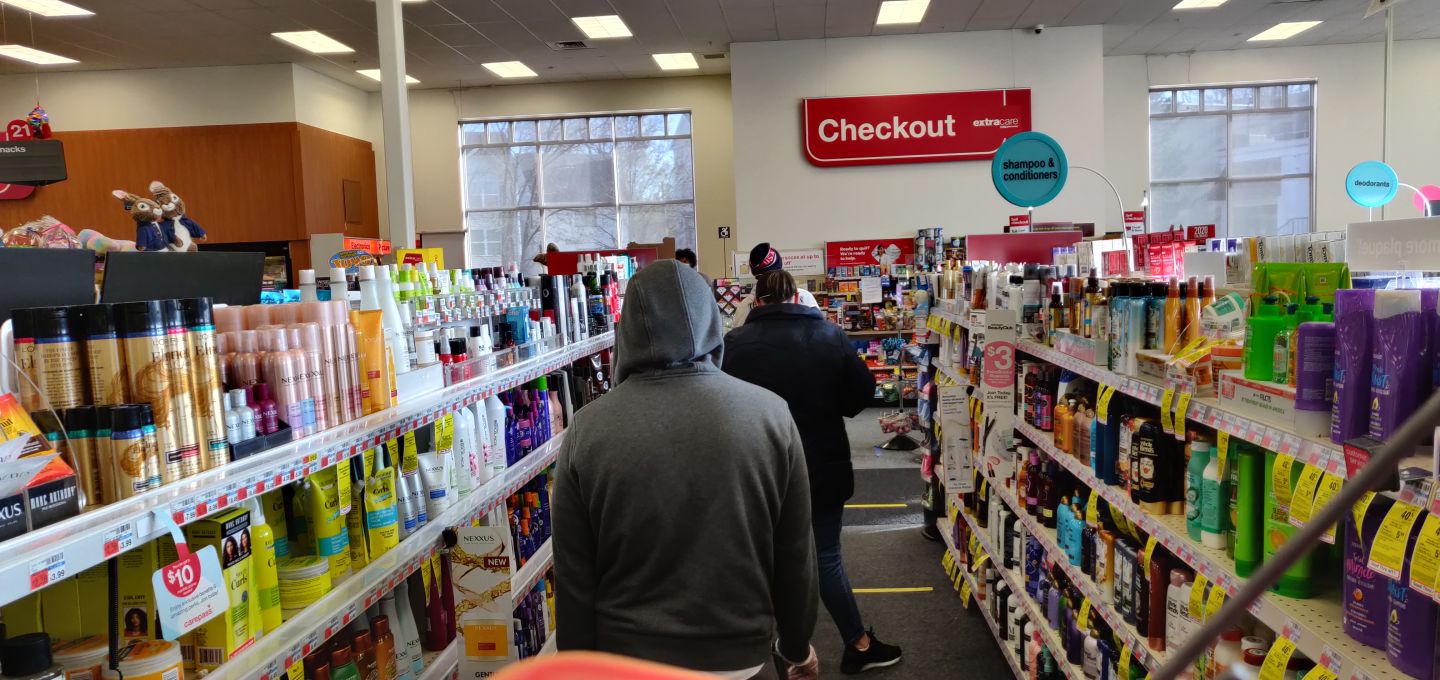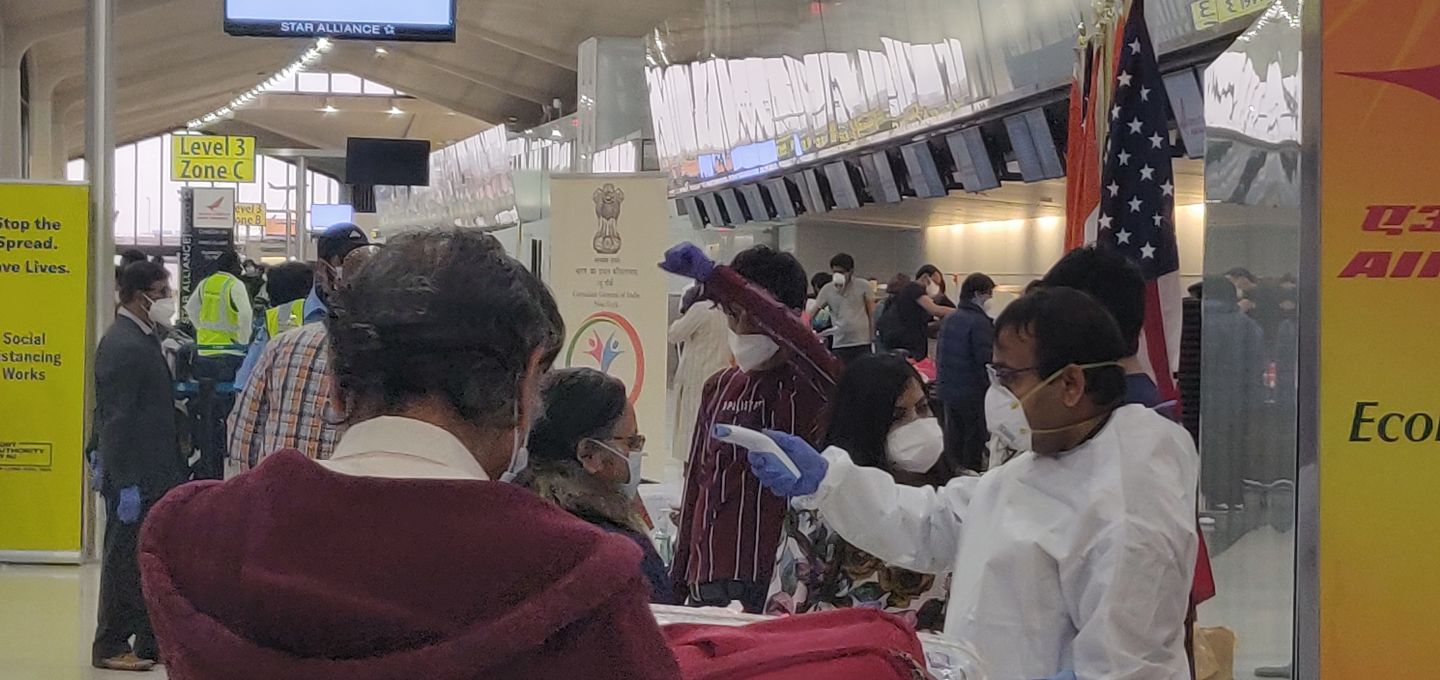The COVID-19 crisis has hit the world far harder than anyone could have expected. And for this correspondent it has been no different. My family and I were stranded in the United States from March until May because of the international travel bans imposed by various governments.
It wasn’t until May 15 when the Vande Bharat Mission was in full swing that we were able to return to India. When we finally arrived back in New Delhi on May 16, we went into quarantine until this past weekend.
We are finally home now but the pandemic has without doubt shaken many aspects of our lives and conveniences that we took for granted.
The most fitting example would be our evacuation flight on May 15 from Newark to New Delhi with face shields and packed lunches on our seats, cabin staff in full PPE gear and a 14-hour flight wearing a mask and gloves. The social distancing protocol at the airport, as well as the deserted immigration area, really drove home the impact of the crisis. In fact, the screening process at the airport meant that it took over eight hours from when our flight landed until we managed to reach the hotel that was to be our quarantine centre.
The isolation over the next fortnight in quarantine, with prepackaged meals left at our door and daily doctors’ visits to monitor us for COVID-19 symptoms, as well as the view of the empty city streets from our window, were the latest in a long line of unprecedented situations we had been facing over the past three months.
The 23-day vacation that turned into a 65-day forced stay
My family (father, mother, brother, aunt and uncle) gathered in San Francisco on March 10. Our holiday plans included a road trip to Los Angeles and Las Vegas, before flying to Texas for our cousin’s wedding. We had been planning this trip for nearly a year and had made Herculean efforts to pre-book everything online, from our accommodation arrangements in seven different cities to renting a car for our road trip.
Life seemed pretty normal in San Francisco at the beginning of March; restaurants and malls were still open, people were out on the streets and tours were still going. Our hotel concierge told us that a lot of tourists had cancelled their trips, so the city was emptier than usual.
We had three days in the Bay Area and were resolved to make the most of our holiday. So we managed to hit all the tourist spots in the city – Union Square, Fisherman’s Wharf, the Golden Gate Bridge, Chinatown. At this point, it seemed like a normal holiday, albeit one where we carried around our own sanitiser and masks.
We headed to LA in our rented minivan on March 13 and, at my father’s urging, took the scenic route. The Pacific Coast Highway from San Francisco to Los Angeles was a drive that all the tour guides and websites recommended. It was a beautiful drive, even if it took a few hours longer than driving on the freeway.
We found things to be a little more serious in Los Angeles. While driving into the city, we were apprised that all large attractions such as Universal Studios, Disneyland and the Griffith Park Observatory had been closed to limit the spread of the outbreak. At that time the US had a total of about 2000 COVID-19 cases – Washington and California were the states hardest hit by COVID-19 with about 500 cases – and we were warned to take extra precautions.
Things took a more serious turn on our last night in LA, when we were informed that the family wedding we had made this trip for had been postponed because of virus cases rising in Texas.
Our relatives suggested we head to their home in Connecticut rather than move on to New York where the COVID-19 cases were rising by the hour. We decided to cut our time in Vegas and take advantage of all the airlines’ new flexible rebooking policy to fly to the East Coast earlier than planned.
During our short time in Vegas, we saw the increasing effect the pandemic was having on the city’s economy. All the shows, the casinos, the buffets and restaurants were in the process of closing down, and everyone was talking about ‘social distancing’ and ‘self-isolation’.
We flew to La Guardia from Vegas on March 18 and it took two Ubers to ferry the six of us and our luggage to Stamford, Connecticut. During our cab journey, we learned that New York now accounted for nearly half of the US' infected cases, which had explosively grown to over 40,000 over the course of two days.
The next morning, we learnt that Prime Minister Narendra Modi had announced a travel ban on all international flights to and from India with effect from March 23. This sent us scrambling to buy tickets on any flight landing in Delhi before then. We were, however, unsuccessful.
And thus began our long forced stay in the United States.
Tourists stranded in a foreign country during the pandemic
The vast shadow the pandemic had cast was really driven home for us when my father tried to get a prescription refilled for his medication for an autoimmune condition while we were stranded in the US. He had been taking this medicine to manage his condition for the past decade and thought he had brought enough to last him for our vacation.
However, as our pre-planned departure date from the US (April 1) came and went, my father found that he would soon run out of his medication.
Normally, to get a refill, he was told, he would have to visit a general physician who would examine his current prescription and give him a refill order that he could use at any pharmacy as long as the dosages remained the same.
But with the coronavirus raging, most GPs had closed their practice and were unwilling to issue a prescription just by talking with him over the phone. We contacted the Indian consulate, who said the American Association of Physicians of Indian-origin were setting up a system to help Indian citizens with their medical needs and would get in touch with us soon.
A schoolmate of mine, who is a pulmonologist practising medicine in the US and who we had been frequently consulting for advice about taking precautionary and preventative measures, suggested we visit the nearest urgent care centre, who indicated that a new prescription would be extremely expensive and the process of refilling one would take time for verification.
Eventually, a doctor who was a personal friend of our relatives' in the US arranged for the prescription to be refilled, but a simple process that would normally take less than a day stretched out over a week.
It was hard to believe how quickly the situation deteriorated. During the first week of March, we had been watching the news in India about the rapidly spreading COVID-19 epidemic, with Italy, Iran and South Korea the prevalent hotspots at the time. The US seemed mostly virus-free, with just over 1,000 reported cases before we left for our vacation. By the time we returned home to India, 65 days later, the US was top of the list of the maximum number of cases and had the highest death toll.
The past few months have passed with us feeling like we were in a state of limbo. Life was on pause, as it was for most people around the world, but being stuck in a foreign country instead of being at home in the comfort and familiarity of India was a strange experience. As the world attempts to recover from this global pandemic, we feel happy and lucky to finally be home. Hopefully, there is nowhere to go but forward from now on.

